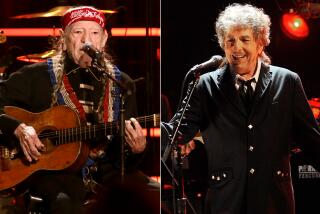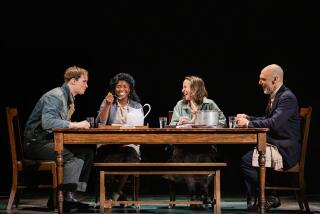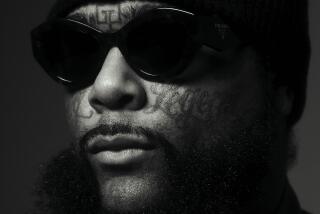Bob Dylan’s Rolling Thunder Revue: A user’s guide
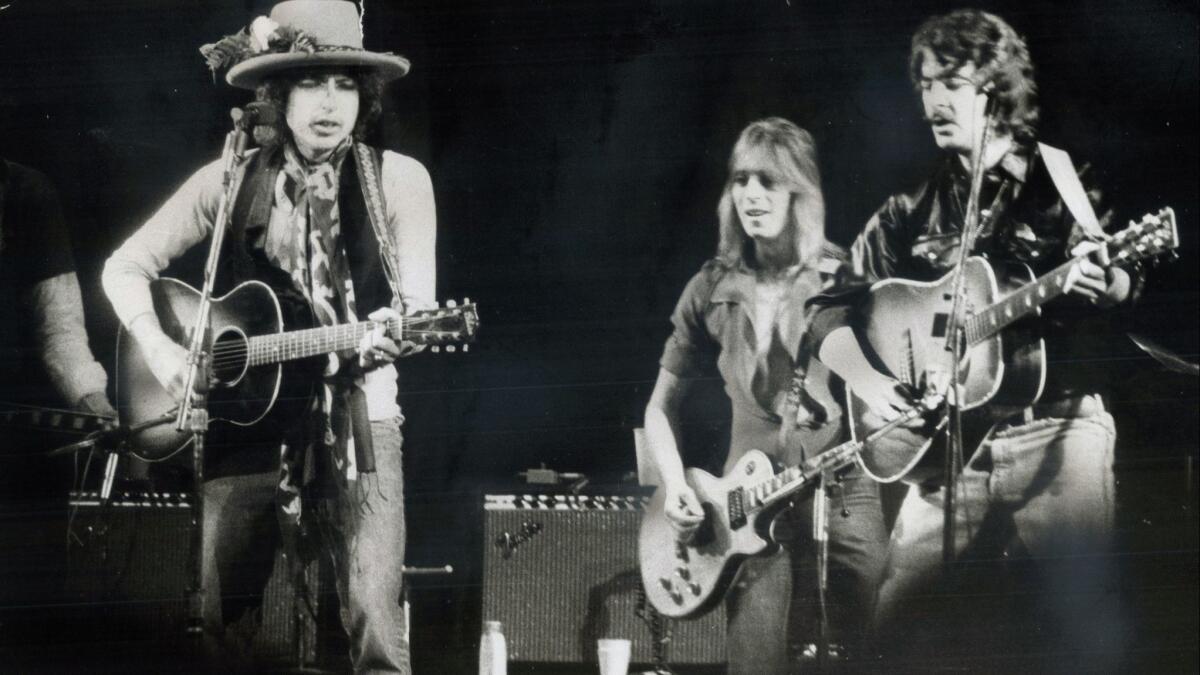
The background: When Bob Dylan toured for the first time in eight years in 1974 following his near-fatal 1966 motorcycle accident, he was backed by The Band for a triumphant tour dubbed Before the Flood that touched down in sports arenas and other large venues across the country. The following year he assembled a far less structured outing, the Rolling Thunder Revue, something he envisioned being more in line with old-time traveling medicine shows, gypsy caravans or vaudeville tours. He chose smaller venues — mostly theaters that held 1,500 to 5,000 people and predominantly in non-major markets. It opened in historically resonant Plymouth, Mass., with stops in Cambridge, Worcester, Niagara Falls and Augusta, Maine, before ramping up for bigger shows in Boston, and Montreal, and concluding at Madison Square Garden in New York.
The participants: Perhaps most notably, Dylan reunited with folk music queen Joan Baez and also brought along Byrds co-founder Roger McGuinn, folk music hero Ramblin’ Jack Elliott and actress-singer Ronee Blakley (fresh off her role as a country singer in Robert Altman’s “Nashville”). The band centered on violinist Scarlet Rivera, lead guitarist Mick Ronson (just out of David Bowie’s Spiders From Mars band) and multi-instrumentalist David Mansfield, along with guitarists Bob Neuwirth, Steven Soles and a very young T Bone Burnett, bassist Rob Stoner and drummer Howie Wyeth. Joni Mitchell stopped in for a guest appearance in Connecticut and stayed on through the end of the first leg of the tour. Dylan also drafted playwright Sam Shepard, ostensibly helping script scenes intended for the film Dylan was shooting at the same time, “Renaldo and Clara.” Poet Allen Ginsberg fulfilled the role of sage on the tour, which was documented as it unfolded for Rolling Stone magazine by journalist Larry “Ratso” Sloman. Emerging punk-poet Patti Smith is also an important force in the genesis of Rolling Thunder, though she didn’t sign on as a member of the touring group.

The name: In a nutshell, according to a source close to Dylan, “Nobody knows why Bob calls anything anything.” The “Revue” part of the moniker, however, was designed to signal that shows would feature a series of acts, not just Dylan. In the new Netflix documentary “Rolling Thunder Revue: A Bob Dylan Story by Martin Scorsese,” available on June 12, there are references to an original idea of branding it “The Montezuma Revue” and that perhaps after experiencing a string of thunderclaps one day, a phenomenon called “rolling thunder,” the phrase captured Dylan’s imagination. It’s also noted in the film that the U.S. government’s code name for its secret bombing campaign of North Vietnam in the mid-‘60s was “Operation Rolling Thunder.” The troupe included a stop in upstate New York at the Tuscarora Reservation of Iroquois, whose chief at the time was Chief Rolling Thunder.
The shows: Reflecting the spontaneous nature of the music, Dylan insisted that shows be announced spur-of-the-moment style, with little or no formal advertising, relying instead on handbills distributed perhaps a few days before each show. Additionally, Dylan showed up most nights wearing pancake makeup, occasionally behind a plastic mask, and always a broad-brimmed fedora decorated with fresh flowers, a long scarf around his neck and a dark vest. In an interview for Scorsese tour film, Dylan suggests the theatrical bent formed a musical analogy to the Italian commedia dell’arte theater tradition. He also confesses that he was taken with the face paint used by — believe it or not — Kiss, brought to his attention on a shirt worn by a 19-year-old Sharon Stone, whose mother brought her along to one of the shows.
The setlist: Dylanologists consider it perhaps the purest expression of Dylan’s feelings about live performance: that concerts should never be rote repetition of the past, or note-for-note copies of recordings, but always alive in the moment. The set list from night to night remained about 80% the same, with a few numbers being swapped out: “It Takes a Lot to Laugh, It Takes a Train to Cry” or “Tonight I’ll Be Staying Here With You” in place of “A Hard Rain’s a-Gonna Fall” in some cities; “The Water Is Wide” or “Dark as a Dungeon” for “Wild Mountain Thyme” in the slot for a traditional folk number in others.
The critical reception: Dylan biographer Clinton Heylin, in his book “Behind the Shades,” crystallized the enthusiastic critical response, writing: “The Rolling Thunder Revue shows remain some of the finest music Dylan ever made with a live band. Gone was the traditionalism of The Band. Instead he found a whole set of textures rarely found in rock. The idea of blending the pedal-steel syncopations of Mansfield, Ronson’s glam-rock guitar breaks and Rivera’s electric violin made for something as musically layered as Dylan’s lyrics.”
The commercial reception: “The tour was a catastrophe,” Dylan tells Scorsese. “It wasn’t a success — not if you measure success in terms of profit.” It’s not a big surprise that financially, the tour ended up in the red, given the large traveling entourage and comparatively small paydays each night.
The artifacts: The Rolling Thunder Revue is the subject of a new documentary by filmmaker Martin Scorsese, who previously directed “No Direction Home” in 2005. The film is assembled from footage shot during the tour by cinematographers David Myers and Howard Alk, and supplemented by contemporary interviews with Baez, McGuinn, Sloman, tour manager Lou Kemp and, most significantly, Dylan himself, in his first on-camera interview in a decade. The two-hour, 22-minute film captures what most of those who experienced the Rolling Thunder shows said: They were among Dylan’s most passionate, focused and illuminating performances, both of the new material of which he was most excited, and the classics and deeper cuts that found their way into the set lists. The tour is also documented in an ambitious 14-disc, 148-track box set, “Rolling Thunder Revue: The 1975 Live Recordings,” serving up an expansive collection of those performances.
The doc highlights: How about footage of Dylan behind the wheel of the Winnebago carrying part of the ensemble from town to town? Or Joan Baez applying white face paint and borrowing Dylan’s clothes to find out how the Spokesman for a Generation is treated by others? There’s also a priceless scene when the ragtag band dropped in on Gordon Lightfoot’s house in Canada, and the camera crew captured Joni Mitchell teaching her new song, which she says was inspired by the tour, to Dylan and McGuinn, with Lightfoot looking on over their shoulders. The song? “Coyote.”
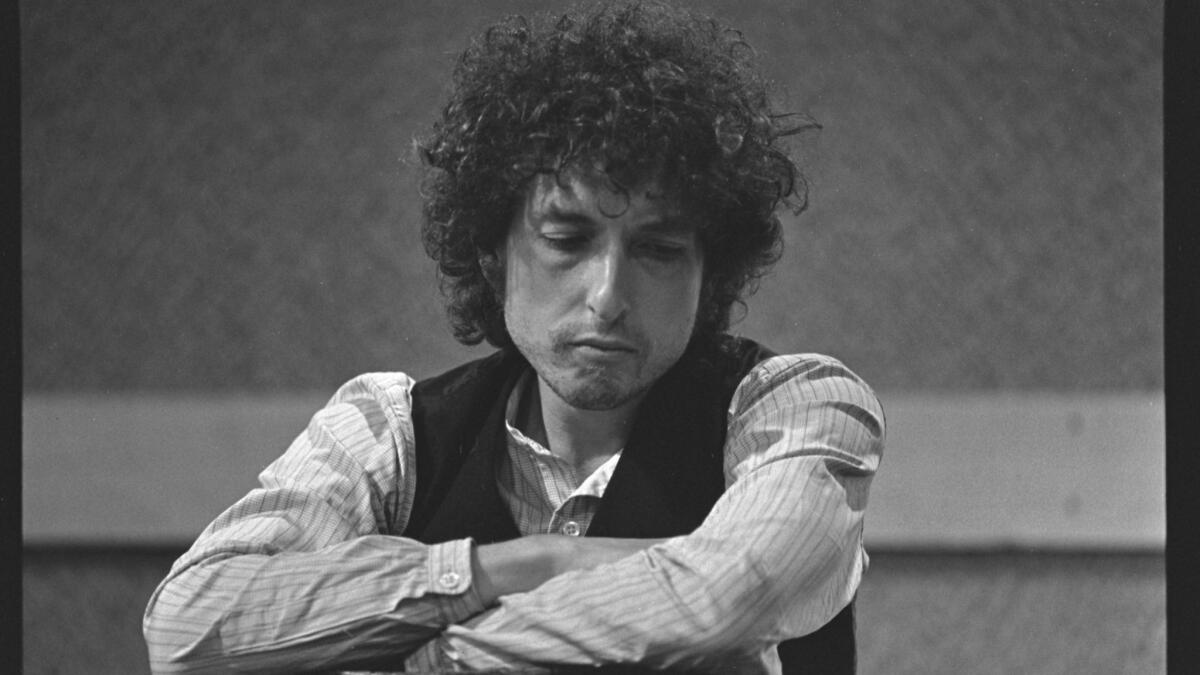
The box-set highlights: It’s hard to go wrong with “Hurricane,” his ripped-from-the-headlines telling of the story of boxer Ruben “Hurricane” Carter, one of his most fiery protest songs. The version on Disc 7, recorded in Cambridge, is the one from the film. Dylan displays some of the most evocative, skillfully sculpted vocalizing of his career in the rehearsal version of Charles Badger Clark Jr.’s “Spanish Is the Loving Tongue” on Disc 1, and the extraordinary, melismatic rendering of his own haunting “One More Cup of Coffee (Valley Below)” on Disc 3. It’s also a treat hearing his take on Curtis Mayfield’s “People Get Ready” on the same disc, although audio quality of this rehearsal recording is less than ideal. Jump to Disc 4 and revel in the chemistry of the duet between Dylan and Baez on “Blowin’ in the Wind.” Disc 7 has an illuminating solo acoustic version of “Simple Twist of Fate” that demonstrates how Dylan treats his repertoire as a living entity rather than a static document. He changes lyrics, even spins out an entirely new verse. It was the first time he’d played “Blood on the Tracks” material live after the album was released to rapturous response in January. Among the Disc 14 one-performance-only tracks, Peter La Farge’s “The Ballad of Ira Hayes” is particularly compelling coming from Dylan as he sings from the Tuscarora Reservation in New York.
As a finale, go to the bouncy arrangement of Woody Guthrie’s “This Land Is Your Land,” which shifts the tone from folk-rock tribute to country-gospel rave-up. It was an all-hands-on-deck event at the end of each evening. On Disc 9, from Boston, Dylan proclaims, hopefully: “One day it’ll be the National Anthem.”
Follow @RandyLewis2 on Twitter.com
For Classic Rock coverage, join us on Facebook
More to Read
The biggest entertainment stories
Get our big stories about Hollywood, film, television, music, arts, culture and more right in your inbox as soon as they publish.
You may occasionally receive promotional content from the Los Angeles Times.
